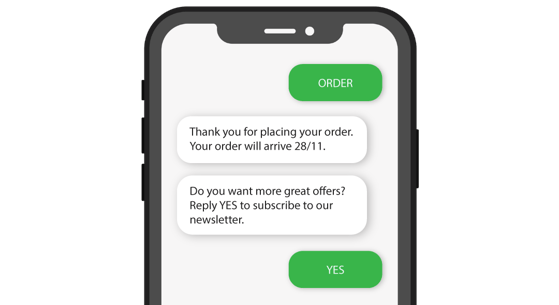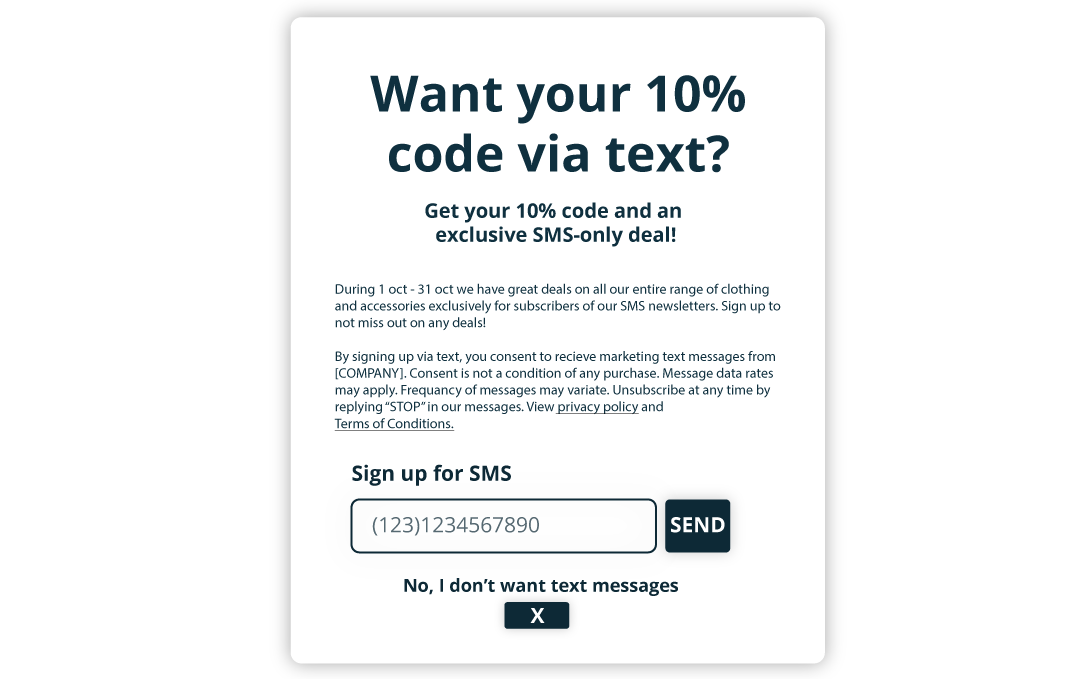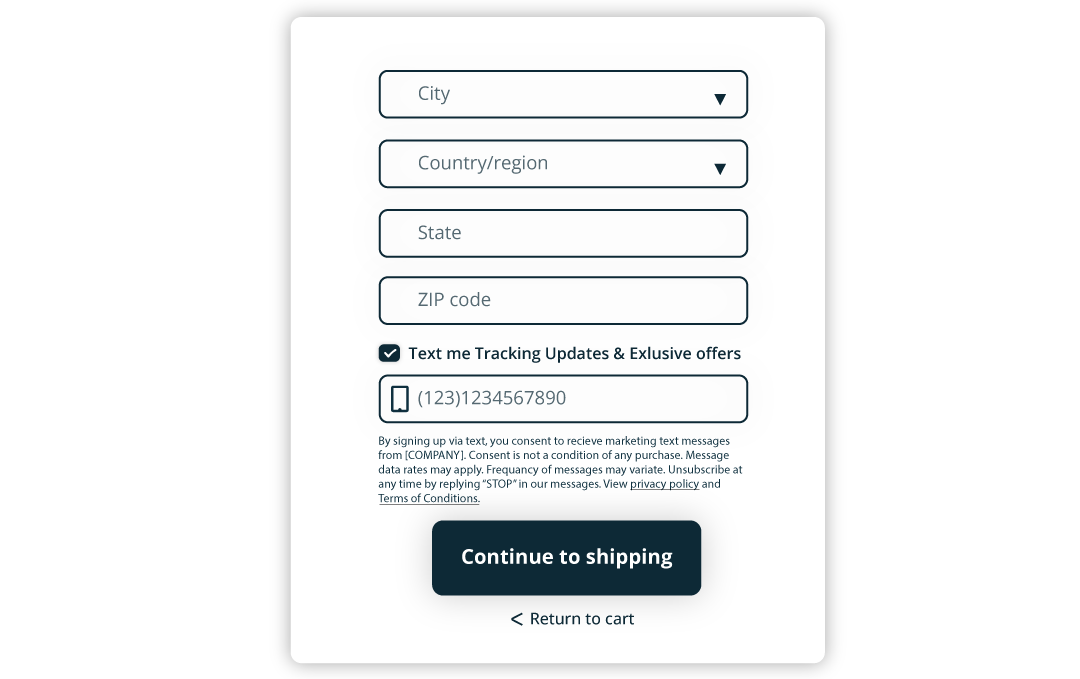To effectively utilise SMS as a marketing channel and gain the trust and loyalty of your prospective customers, it is important to follow best practices when sending messages to your contact database. This includes obtaining opt-in consent before sending marketing SMS or using over-the-top (OTT) channels such as Whatsapp, Viber, Messenger, and Instagram.
In the age of instant and personalised communication, SMS and rich text messaging formats are highly effective compared to emails. SMS messages have a higher open rate than emails at 98% (compared to a 20% open rate for emails), which is why messaging should have a place in your marketing strategy and budget.
Within a mere 1-5 minutes of receipt, approximately 60% of individuals proactively check their text messages. This impressive engagement rate positions SMS as a highly valuable marketing channel to reach and captivate your customer base. However, it's crucial to remember that such communication should only occur with explicit permission – an 'opt-in' approach.
Always ask for permission
At the core of successful marketing lies an actively engaged audience, and the foundation of engagement begins with prospective customers willingly opting in to receive your messages. Just as it is crucial with email marketing, obtaining subscribers' consent to receive messages is essential. By exclusively targeting users who have opted in, you not only adhere to best practices but also ensure compliance with the GDPR regulations governing the use of personal data.
All businesses regardless of size, need to understand what the EU GDPR Data Protection Regulations requires. However, getting opt-in from your audience can be as simple as asking them to text a keyword (for example "YES") to sign up. Once the customer signs up, the company confirms their subscription and validates the value they can expect to receive. The same rules apply in the UK. Nothing has changed due to Brexit.
What is SMS consent?
To ensure full compliance with SMS consent regulations, it is crucial that subscribers have a clear understanding of what they are opting in to. Simply giving you their phone number or email is not enough. Consent must never be assumed; it must be explicitly obtained and documented in writing, verbally, electronically, or on paper. Whether you are collecting SMS consent online or offline, it is essential to clearly outline the nature of the text messages individuals will receive from your business.
SMS consent laws are stringent, and failure to provide this necessary disclaimer can result in fines and penalties. Simply stating that subscribers agree to receive marketing messages in a general sense is inadequate. The consent must be specific and clearly define the type of messages they will receive from your business. Taking these precautions not only ensures compliance but also fosters transparency and trust with your audience.
How to use SMS opt-in?
There are different strategies for opt-in, below are some common examples.
1. Create an SMS opt-in form
Sign-up form
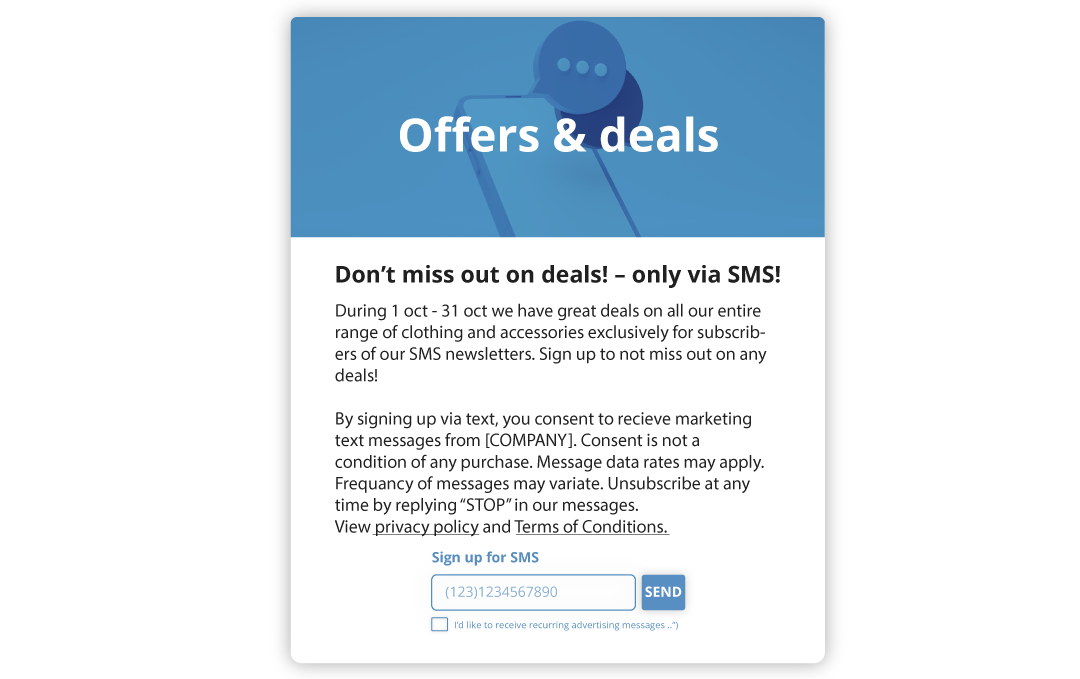
Multi-step form
Pop-up form
Check-out form
2. Provide the link to the terms and conditions
A user should tick “I agree to the Terms and Conditions” to receive messages from you. Ensure that you provide a link to the corresponding terms and conditions page. However, it's not your fault if the customer doesn’t read it in detail.
3. Set expectations
Tell users why you need their phone number at the beginning of every interaction. If you clearly state what messages you're going to send and the frequency, users will be fully aware of what they will get from their subscriptions. If they are genuinely interested in your business, you will see that your messaging campaigns will work out just fine.
4. Give an incentive
Offer an attractive incentive that lets your customers share their contact information for something valuable. It can be a discount on the first purchase, etc. Nothing engages your audience better than a freebie. Freebies speed up the process of moving a customer down the sales funnel and ensure a positive user experience.
"Simply enter your mobile number below. Once you reply to our confirmation, we'll text you your first coupon".
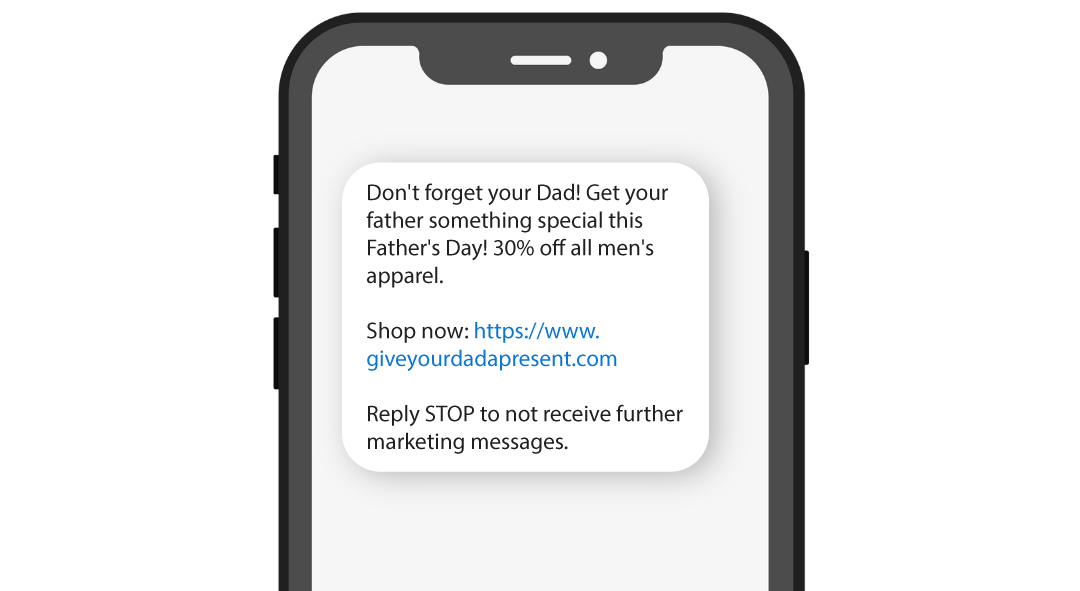
5. Confirmation message
Regardless of how users signed up, your first text must be a compliance message confirming opt-in. It should include the following:
- The identity of your company/brand/program
- Description of the message type people are signing up for
- Mention how often you will send messages
- Opt-out instructions in bold type (e.g., Reply STOP to unsubscribe)
SMS opt-out
Opt-out is the reverse of opt-in. It means unsubscribing from a company's mailing list via SMS or OTT messaging channels. Sooner or later, subscribers may lose interest in your business. Empower your customers with the possibility to manage their preferences. Tell your users how to opt out directly in the form or in each text message you send. Usually, brands give a shortcode to cancel the subscription, like QUIT, OPT-OUT, UNSUBSCRIBE, CANCEL or STOP. It's a win-win and enables you to maintain self-cleaning of your subscriber list.
More tips and tricks
Include the “Phone number” field in your registration form
But don’t make it an obligatory field; otherwise, users may abandon the registration. Be ready to tell what subscribers will receive by email and what they will receive via text messages – but don’t send the same offers in both channels.
Integrate SMS opt-in with other marketing channels for example social media Integrate SMS opt-in with other marketing channels for example social media. Find out which channel your target audience prefers and place an attractive SMS opt-in on this channel. Social media is an excellent place to start due to its broad outreach.
Most important – be relevant by leveraging customer data
Don't bombard your customers with poor communication and irrelevant product recommendations. Instead, ensure you can collect, store and leverage customer data—and combine it in the customer journey to understand the customer’s intention in real-time, to send personalised and relevant messages in your communication.
 When designing your customer experience journeys, SMS should be considered at every communication touchpoint. Ask yourself: is this message bringing value to the customer at this touchpoint, and is it moving them along in the CX journey? Allowing customers to opt-in to SMS communications at those touchpoints helps ensure you provide them with the information they want. Personalise messages and make them count when you text your customers.
When designing your customer experience journeys, SMS should be considered at every communication touchpoint. Ask yourself: is this message bringing value to the customer at this touchpoint, and is it moving them along in the CX journey? Allowing customers to opt-in to SMS communications at those touchpoints helps ensure you provide them with the information they want. Personalise messages and make them count when you text your customers.
By complying with the regulations for the area within which your business operates, you protect your business from being accused of spamming your SMS contact database. SMS opt-in and opt-out regulations are the foundation of your future marketing campaigns and your guarantee of GDPR compliance.
